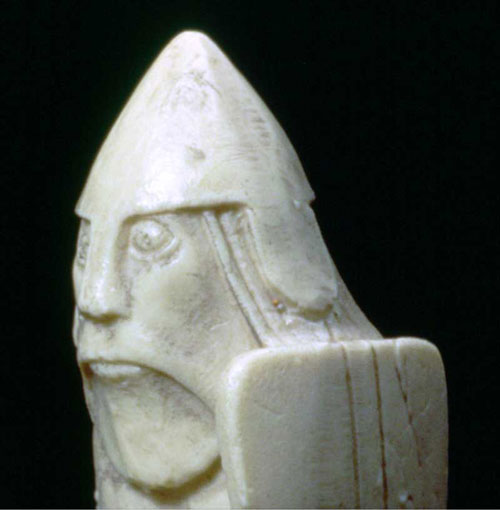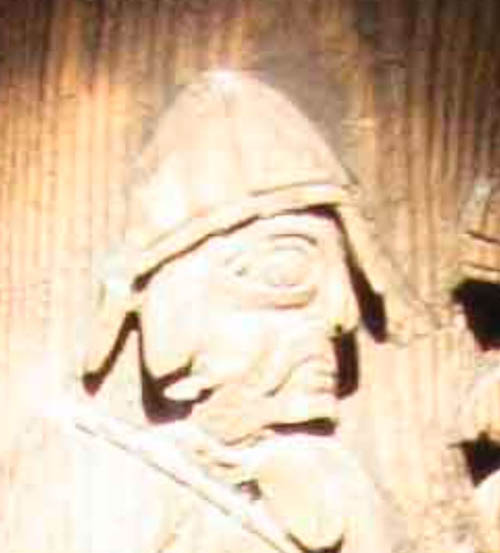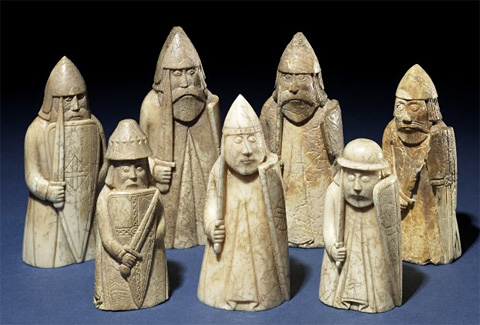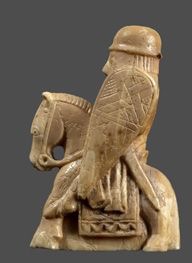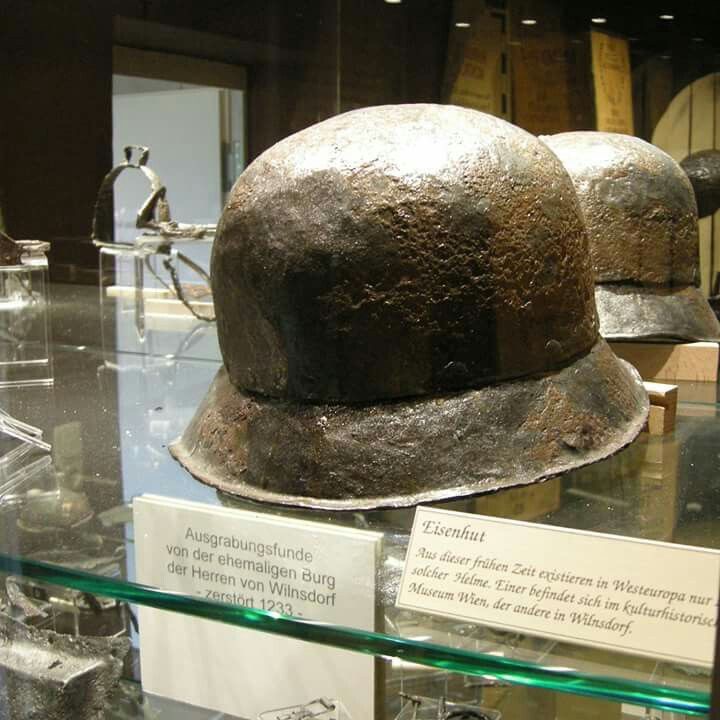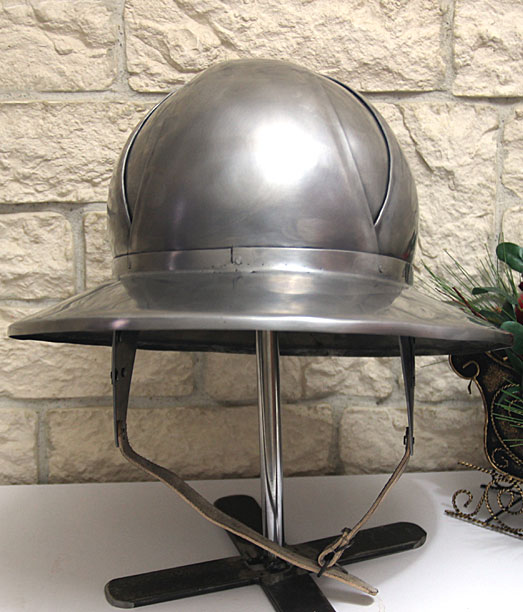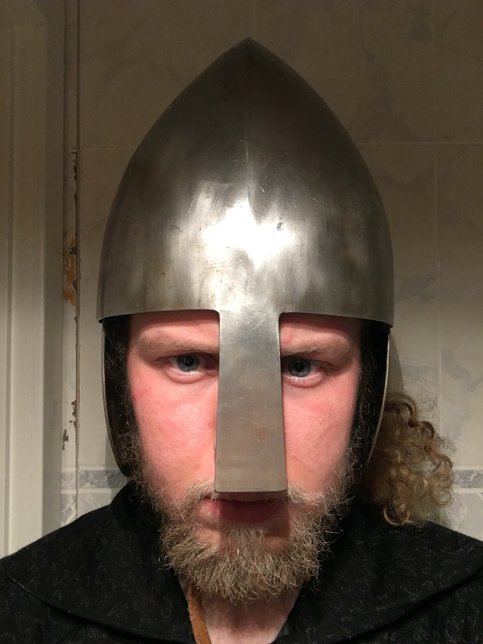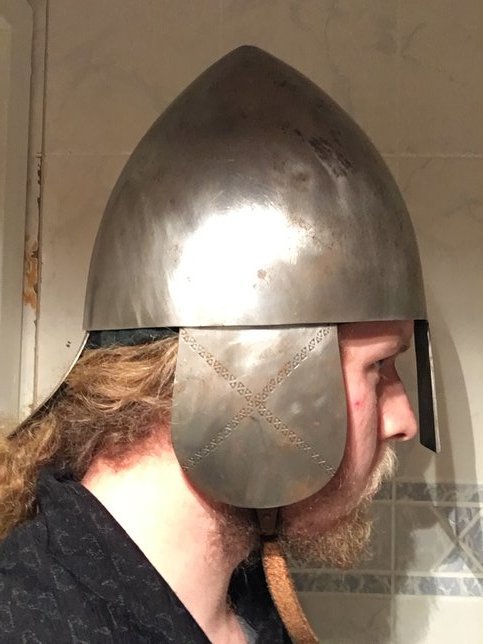I've never seen anything like these helmets which seem to be a peculiarly Scandinavian design. Sturlunga saga calls helmets 'iron caps' which is a description that fits the Lewis figures' helmets. I know there is a limit to the amount of detalis you can extract from 12th century art but I've been looking at the chess figures and have noted some interesting things:
- None of the Lewis chess men except for one of the knights seem to have helmets with a nasal.
- From the looks of them they Lewis chess men all have helmets beaten out of a single plate. You'd think the artists would have carved 'spangen' on the helmets the Lewis figures wear if helmets with composite domes were common in this era.
- The cheek/neck guards look like they were made of steel but one of the knights seems to have ones meant to look like they were made of leather or cuir bouilli.
- The upper knight in the Valţjófsstađir carving seems to have a 'classic' spangenhelm with a nasal.
I've been experimenting with gluing cardboard cheek and neck guards to my nasal helm and I'm pretty sure the cheek and neck guards were suspended with leather hinges from the helmet dome rather than rigidly welded or riveted to the helmet dome. It also makes sense that they were flared outwards at the bottom because otherwise the bottom of the neck guard in particular catches on your clothing. I'm still on the fence about the material these cheek pieces were made of. Generally I am skeptical about leather and I'm going with metal but after conducting some experiments of my own I have concluded that when it comes to things like cheek and neck guards there is something to be said in favour of really tick 5-6mm thick bovine leather (without even hardening it) even if I have never seen any real evidence of such armour.
